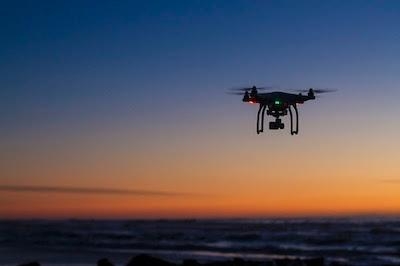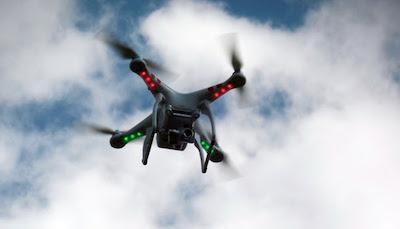Industry Calls For A Data-Driven, Performance-Based Approach To UAS Regulations
The Association for Unmanned Vehicle Systems International (AUVSI) says the FAA's proposed rules for operating small unmanned aircraft systems (UAS) over people and for safe and secure small UAS operations are too restrictive and do not consider the safety or societal benefits of the technology. In comments submitted to the FAA, AUVSI also urges the agency to adopt rules for flying UAS at night and requiring the use of remote identification.

“The FAA has taken a prescriptive approach to these two proposed regulations, which are overly conservative and too restrictive,” said Brian Wynne, president and CEO of AUVSI. “Existing data and emerging UAS capabilities and applications should instead guide rulemaking and help advance the commercial use of unmanned systems.”
In the filing for the Notice of Proposed Rulemaking (NPRM) for Operations of Small UAS over People, AUVSI advocates for the FAA to take a two-step approach. First, enact a revised framework that provides certainty for operators, such as safety compliance based on relevant standards and aircraft reliability, and permits operations over moving vehicles.
Second, the agency should develop new, performance-based regulations that more appropriately account for the low risks posed by UAS operations, backed by available data. AUVSI points to the success of a data-driven approach in the NPRM that would enable routine operations at night, which drew from experience gained during the Part 107 waiver process. AUVSI supports the provision to allow night time operations, along with proposed requirements for anti-collision lighting and flight training.
Similarly, AUVSI’s comments on the Advance Notice of Proposed Rulemaking (ANPRM) for Safe and Secure Operations of Small UAS caution the FAA to avoid imposing prescriptive requirements or adopting rules in the absence of specific concepts of operation. AUVSI notes the proposed rules for stand-off distances, payloads and system redundancy could have unintended consequences for commercial operators, such as increasing density of aircraft traffic or moving over sensitive areas, adding weight, complexity, and cost, and hindering the development of legitimate UAS operations.

AUVSI also tells regulators of supporting the testing and development of a robust Unmanned Traffic Management (UTM) system that is ultimately compatible with air traffic control (ATC). Although the UTM system should be a priority for the FAA, AUVSI says, full implementation should not be a prerequisite for additional expanded operations. AUVSI adds that for a UTM system to be successful and efficient, all UAS must be equipped with technology that enables them to be remotely identified during flight.
AUVSI further stresses in each comment the importance of proceeding with rulemaking for Remote ID, which has been long delayed and was recently delayed further.
“The adoption of these rules has already been delayed at least two years, and the FAA has made clear that even the rules now proposed in the NPRM will not take effect until the issues associated with remote identification of UAS in flight…are solved,” AUVSI says. “Any additional delay beyond what is strictly necessary in permitting operations over people will needlessly hinder the development of the UAS industry.”
(Source: AUVSI news release. Images from file)
 Classic Aero-TV: Extra Aircraft Announces the Extra 330SX
Classic Aero-TV: Extra Aircraft Announces the Extra 330SX Aero-News: Quote of the Day (11.15.25)
Aero-News: Quote of the Day (11.15.25) ANN's Daily Aero-Term (11.15.25): Middle Marker
ANN's Daily Aero-Term (11.15.25): Middle Marker NTSB Final Report: Lancair 320
NTSB Final Report: Lancair 320 Airborne 11.14.25: Last DC-8 Retires, Boeing Recovery, Teeny Trig TXP
Airborne 11.14.25: Last DC-8 Retires, Boeing Recovery, Teeny Trig TXP




